The Ministry of Finance and Public Credit issued Decree 2497 of 2022 on December 16, 2022, to establish differential risk ranges of the Compulsory Traffic Accident Insurance (“SOAT“), amend Article 2.6.1.1.4.2.3 of Decree 780 of 2016 and regulate paragraph 1 of article 42 of Law 769 of 2002. Among the relevant changes we highlight the following:
- Motorcycles of less than 100 cc and up to 200 cc, motorcycles with up to 5 passengers, tricycles, quadricycles, business cars, urban cabs and minibuses, urban public service, buses, vans, and inter-municipal public service vehicles are on the risk range in which the SOAT premium will be equivalent to 50% of the final price in force as of December 14, 2022.
- For the abovementioned vehicles, insurance companies must cover health expenses caused by accidents up to a limit of 300 Minimum Legal Daily Wages (“SMLDV”), while the General Social Security System in Health (“ADRES”) must cover the expenses exceeding such amount and up to 800 SMLDV with resources to be transferred by the National Government from the General Budget, according to the budgetary availabilities.
- The Financial Superintendence of Colombia (“SFC”) oversees the calculation of the maximum legal rate of the premium applicable to these special cases.
- It was ratified also that insurance companies holding the license to promote this line of business are obliged to issue the policies throughout the country.
- To guarantee the financial viability of the line of business, authorized insurance companies must implement a risk compensation mechanism to prevent adverse selection by vehicle category.
- For the owners of vehicles that do not claim to the SOAT policy in two years before its expiration, and who renew it in a timely basis, are entitled to a onetime 10% discount on the value of the premium. This discount will not affect the value of the contribution to FONSAT, which must be calculated upon the value of the maximum rate. This measure applies to vehicle owners who have had a good performance during the years 2020 and 2021, with which the discount will be applied to the premium applicable during 2022.
- The discount will be granted to the combination between the vehicle and the policyholder since the policyholder may only be given the benefit once.
This Decree is effective from December 19, 2022.
- External Circular 028 2022, rates of the Compulsory Traffic Accident Insurance for the categories of vehicles that are part of the differential range by risk referred to in Article 1 of Decree 2497 of 2022, Financial Superintendence of Colombia,
The Financial Superintendence of Colombia (“SFC”) published External Circular 028 of 2022 (the “Circular”), on December 18, 2022, in which the maximum SOAT rates for the categories of vehicles that are part of the differential risk range are established to incorporate the 50% reduction on the final price in effect as of December 14, 2022, pursuant the mandate established in Article 1 of Decree 2497 of 2022. These rates will be in effect as of December 19, 2022.
- External Circular 029 of 2022, Update of the Compulsory Traffic Accident Insurance rates, Financial Superintendence of Colombia
The Financial Superintendence of Colombia (“SFC”) published External Circular 029 of 2022 (the “Circular”), on December 31, 2022, to establish the rates of the Compulsory Traffic Accident Insurance (“SOAT”) that will be applicable as of January 1, 2023, following the principles of equity, sufficiency, and moderation that must govern the rates.
Annual Maximum Rate in pesos of the SOAT premium for 2023, will have an increase of 11.7% compared to the value paid in 2022.
The categories that belong to the differential risk range defined in Article 1 of Decree 2497 of 2022, will have a final value equivalent to approximately 50% of the closing price in pesos in force as of December 14, 2022.
These measures are in effect from January 1, 2023.
- External Circular 027 of 2022, new instructions applicable to insurance pricing, reinsurance agreements and risk management in the surety bonds line of business, Financial Superintendence of Colombia
On December 9, 2022, the Financial Superintendence of Colombia (“SFC”) published External Circular 027 of 2022, which amends External Circular 029 of 2014 – Basic Legal Circular (“CBJ”) and provides new instructions for insurance companies regarding insurance pricing, reinsurance agreements and a modification to the methodology for the accumulation of risks in the surety bonds line of business.
- Technical notes: technical notes must be consistent with the reinsurance agreement that endorse the insurance policy, except for the ones issued prior to the amendment of the reinsurance program. When the pure risk rate is established by the reinsurer the following information must be sent:
- Description and quantification of the market that the insurance company intends to target.
- Clauses and documentation of the product.
- Additional information required by the reinsurer in the pricing process.
The technical note must state the reinsurer’s retention percentage, the rate and the guidelines for the application of segmented rates, and the time period applicable to the rates.
Insurance companies must keep at the disposal of the SFC the proof that the reinsurer has experience in underwriting similar products (with the exception of special or new risks), evidence of the use of sufficient qualitative and/or statistical information for the determination of the rates and recognized actuarial and statistical methodologies for the fixing of the rate.
- Rates assessment: insurance companies must keep at the disposal of the SFC the record of the information listed above. Any additional information exchanged with the reinsurer and the documentation of the rate, its adjustments, agreements in relation to surcharges, discounts applicable to the rate and its limits, must also be kept at the disposal of the SFC.
- Conditions for the transfer of risks through reinsurance contracts includes the requirements that insurance companies must comply with when performing actuarial loss modeling exercises, consisting of implementing reliable quantitative models that allow establishing that the reinsurance program is reasonable.
Additionally, it is provided that insurance companies must carry out evaluations to determine that the reinsurance programs are capable of withstanding the potential losses of the insured portfolio and those arising from the underwriting of new risks. Finally, insurance companies must take into account the ‘risk appetite’ established by their boards of directors and verify that the conditions of the reinsurance programs comply with these guidelines.
- Calculation of the net withholding (retención neta) for the surety bonds line of business: a new methodology was provided for the calculation of the net withholding established in Article 2.31.1.3.1 of Decree 2555 of 2010 for the surety bonds line of business.
The instructions related to technical notes must be observed by the insurance companies at the time of submitting new technical notes, updating the notes in force due to changes in the reinsurance contracts or when technical notes are submitted for the authorization of a new line of business.
The instructions related to the transfer of risks through reinsurance contracts will be applicable to all reinsurance contracts entered or renewed after June 30, 2024.
- Law 2277 of 2022 – Tax reform, impacts for the insurance sector.
On December 13, 2022, Law 2277 was enacted, adopting the tax reform. The following aspects are relevant for insurance companies:
- Surcharge on income tax: Article 10 of Law 2277 expressly provides that insurance and reinsurance companies must pay five (5) additional points to the income tax and complementary taxes during the taxable periods 2023, 2024, 2025, 2026 and 2027.
- Decrease in the exemption of life insurance payments: previously the life insurance payments that did not exceed 12,500 UVT were exempted from occasional income tax. Under Article 29 of Law 2277, the exemption limit was reduced, establishing that payments exceeding 3,250 UVT will be subject to occasional income tax.
- Ruling SC3952-2022, reticence in theft and crime insurance policies, Supreme Court of Justice, Civil Chamber
In a recent decision, the Civil Chamber of the Supreme Court of Justice (“CSJ”) provided important clarifications on the validity of the relative nullity due to reticence in theft and crime insurance policies.
In the proceeding, an insurance company (the plaintiff) requested a ruling on the nullity of an insurance contract, under which a theft insurance policy was issued. The insurer’s request was because the insured had incurred in reticence non informing about a series of dishonest acts of the company´s officials, that were known to the insured prior to the policy underwriting.
Among the charges that were presented by the defendant, it was argued that in theft and crime insurance policies, the relative nullity due to reticence was not applicable. In support of the above, the defendant argued that, considering that the insured risk in this type of insurance policies is the dishonest acts committed by the insured’s officers and that these may occur prior to the contracting of the insurance, accepting the validity of the reticence would result in the insurer earning a premium without accepting any risk whatsoever. The foregoing, given that in its view, the dishonest acts that the company failed to inform where precisely the risk insured under the policy.
In its analysis, the CSJ refuted the arguments presented by the defendant and ruled that the relative nullity due to reticence is applicable in this type of insurance policies. The CSJ found proven that the company had knowledge of dishonest acts committed by its officers and that these were not reported to the insurer. This fact implied that at the time of the insurance request, the essential element of the insurable risk was absent, taking into consideration that the insured eventuality (the dishonest acts of the officers) had already occurred.
Taking the above into consideration and making special emphasis on the fact that the defendant never denied having knowledge of the facts on which the reticence was based, the CSJ decided not to annul the sentence.
- Resolution 1900 of 2022, illegal exercise of securities market activity, Financial Superintendence of Colombia
On December 21, 2022, the Financial Superintendence of Colombia (“SFC”) adopted a precautionary measure against a person for the illegal exercise of the securities market activity, for promoting and advertising financial and securities market products to Colombian residents, without prior authorization from the SFC.
The SFC found proven that the person subject of the precautionary measure, used his social networks to promote the services of brokers located abroad, encouraging Colombian residents to engage with these companies to carry out trading operations with financial assets and foreign currencies (FOREX), without having the authorization of the SFC. In this sense, the SFC reiterated that this type of foreign services may only be promoted or advertised through representative offices or through finders agreements with brokerage firms or financial corporations risk
As a result, the SFC decided to order the immediate suspension of the unauthorized promotion of the products and services of foreign brokers and the withdrawal of any means of communication through which the public was given to understand erroneously that the subject of the measure was authorized to promote or carry out activities in the securities market.
- Ruling STL-14642, statute of limitations to allege reticence in the declaration of the state of risk, Labour Chamber of the Supreme Court of Justice
In Ruling STC 14642 of October 26, 2022, the Labour Chamber of the Supreme Court of Justice (“CSJ”), decided on a cassation appeal filed against a constitutional claim issued by the Civil Cassation Chamber of the CSJ on October 5, 2022. In the appealed decision, an insurer was absolved from the payment of a claim under a life insurance policy, on the grounds that the insured had incurred in reticence in its declaration of the state of the risk and as result the insurance contract was null.
Among the arguments presented by the insured, it was stated that the relative nullity action for reticence was presented out of time, pointing out that the statute of limitations to be considered corresponded to the ordinary statute of limitations (2 years).
The CSJ considered that the arguments used to deny the claim, where supported by the evidence of the case and the applicable law. In turn, the CSJ considered that, based on the precedents of the Civil Chamber the statute of limitations applicable to the relative nullity of the insurance contract due to reticence was the extraordinary (5 year) and not the ordinary (2 years).risk
Therefore, the CSJ clarified that the term to allege the statute of limitations must be counted from the moment in which the inaccuracy or reticence alleged by the defendant occurred. The former began when the plaintiff subscribed the declaration of insurability, therefore, the insurer was within the term to allege the reticence.






